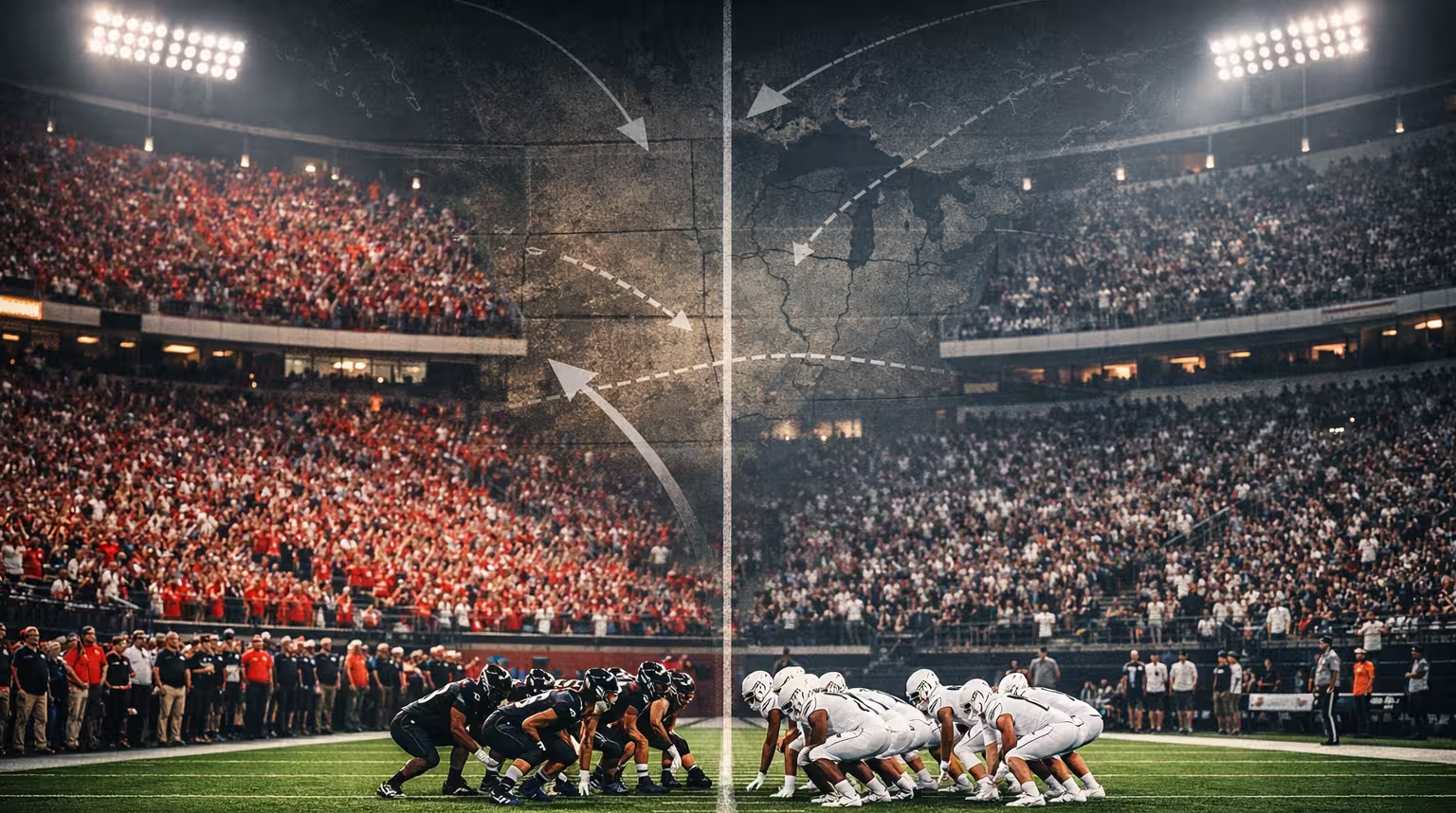The Golden Age of Las Vegas: A Look Back at the City’s Early Years
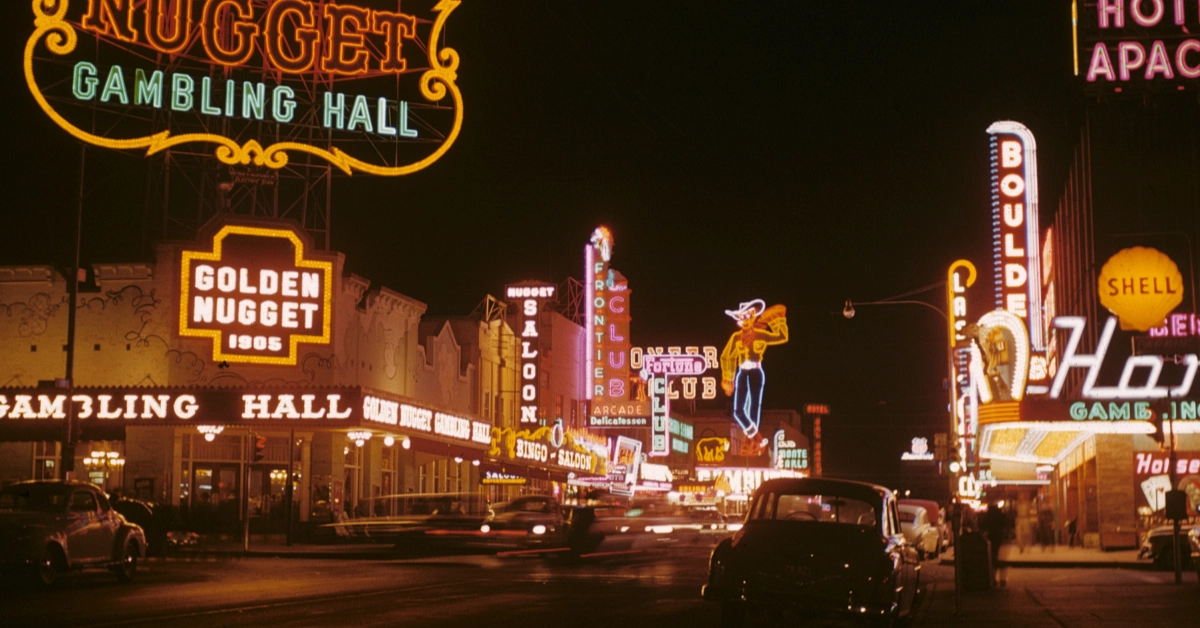
Las Vegas is an oasis in the arid Nevada desert and stands today as the entertainment Mecca of the United States (possibly the world). With its bright neon lights that can be seen from space, luxury casinos, and fabulous shows from A-list performers to Cirque du Soleil, it’s a place that promises excitement no matter where you are in the city limits. But how exactly did this city of dreams materialize in the middle of a barren land?
We are taking a nostalgic trip back to the inception and early years of Las Vegas, looking at the events and characters that transpired to turn a desert outpost into the world’s entertainment capital!
Today, Las Vegas is the place where anything can happen. It’s a city that never sleeps (sorry, NYC, but it’s actually true in Vegas), a playground for grownups, and the ultimate destination for those who are looking for a good time. From the bougie casinos of the Strip to the more understated charms of Fremont Street, Vegas is a world-class destination that draws millions of visitors every year.
But we have to go back to the beginning in order to understand how it got to where it is today. Las Vegas’ early years were way different than the sparkling city of the present—there was magic and a little madness that changed it from a dusty railroad town to the hot spot we know. We’re rewinding the clock to see how Las Vegas became synonymous with risk, reward, and seemingly endless possibilities.
The Golden Age of Las Vegas, spanning from the 1940s to the 1960s, was a transformative period that laid the foundation for the city’s modern-day success. During these years, Las Vegas witnessed the rise of legendary casinos, the influence of organized crime, and the arrival of the entertainers who would become iconic. This era wasn’t only about building a city; it was about erecting and establishing a legend.
The Early Years (1905-1940)
The Las Vegas we know today is a hub of entertainment, bringing in visitors from all over the world. But it wasn’t always this way! How did this now-infamous city get its legs underneath it?
Las Vegas’ story started out in 1905–it was a small railroad town. The arrival of the San Pedro, Los Angeles, and Salt Lake Railroad connected it to major cities like Los Angeles and Salt Lake City, turning it into a stopover, a development that set the stage for the auctioning of 110 acres of land, marking the official birth of Las Vegas.

In these early days, the town’s main industries were agriculture and supporting the railroad workers. The construction of the Hoover Dam in the 1930s was pivotal, attracted a huge workforce, and gave the local economy a much-needed boost. The dam’s construction brought in thousands of workers, creating a demand for housing, services, and entertainment in—you guessed it—nearby Las Vegas.
Before the dam and the casinos, Las Vegas was a humble settlement with little more than dirt roads and simple structures. The city’s early economy was based on servicing the needs of the railroad workers and providing agricultural products. Water from wells allowed for small-scale farming, and the town slowly grew as more settlers arrived. The state’s decision to re-legalize gambling in 1931 was an important turning point, opening up an avenue for the city’s transformation.
First Casinos and Entertainment Spots
Despite Nevada’s 1910 ban on gambling, Las Vegas didn’t give up its love for gaming. Speakeasies and illegal casinos kept gambling alive and well. In 1931, Nevada re-legalized gambling to counter the economic slump of the Great Depression, paving the way for Las Vegas to take up its future as a gambling hub.
Fremont Street, the town’s main thoroughfare, became the center of early gambling activity. Places like the Northern Club were among the first licensed casinos, setting a precedent for the city’s future development. These first spots were modest by today’s standards but provided the basis for the luxurious casinos that would come to define Las Vegas.
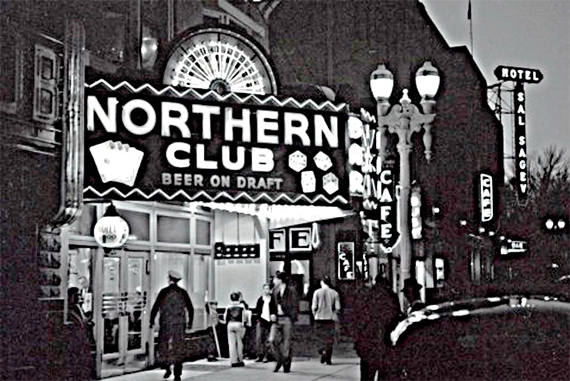
The legalization of gambling also attracted a rougher crowd, which included organized crime figures who saw the potential for massive profits. This era marked the beginning of Las Vegas’ complicated entanglement with the criminal underworld, aka the mafia, a relationship that would have a huge influence on its development over the coming decades.
Bugsy Siegel and Meyer Lansky
The 1940s marked the start of a new era with the involvement of organized crime—infamous figures like Bugsy Siegel and Meyer Lansky saw what was happening in Las Vegas and poured money into its development. Siegel’s Flamingo Hotel, which opened in 1946, was a luxurious resort that brought with it a hint of Hollywood to the desert.
Bugsy Siegel, a notorious gangster with connections to the New York crime syndicate, envisioned a glamorous resort in the desert. Backed by Meyer Lansky, he financed the construction of the Flamingo Hotel, which opened in 1946. Despite Siegel’s murder in 1947, his vision for Las Vegas lived on, and The Flamingo became a model for future developments—luxury accommodations with high-stakes gambling and top-notch entertainment.
Lansky, who was known for his financial skills, supported different projects to ensure the city’s rapid growth. Their combined efforts attracted celebrities and high-roller gamblers, cementing Las Vegas as the best destination for entertainment and gambling. This era saw the construction of other iconic casinos, including the Sahara, the Sands, and the Desert Inn, which further solidified the city’s rep.
Early Struggles and Challenges
The road to becoming an entertainment capital was anything but smooth—Las Vegas came up against a lot of challenges, including economic downturns and a host of legal issues. The 1910 ban on gambling was a huge hurdle, but the city’s resilience saw it through. The Great Depression also hit hard, but the Hoover Dam’s construction brought with it jobs and economic relief.
The early years were also marked by competition and conflict. The city had to contend with the struggles of fast growth, including inadequate infrastructure and the need for law enforcement to manage the influx of new residents and visitors.
Additionally, the influence of organized crime brought with it legal scrutiny and internal conflicts. Despite all of these obstacles, Las Vegas continued to grow, developing a distinct character all its own and a reputation that would eventually attract millions of visitors.
Las Vegas’ early years were filled with conflicts and triumphs, laying the foundation for what would become a world-renowned entertainment go-to. From its modest beginnings as a railroad town to its evolution into a city synonymous with excitement and possibility, the story of Las Vegas is one of ambition, perseverance, and a bit of luck—just what you’d expect from a city that was built on chance!
The Post-War Boom (1940-1950)
When World War II ended, Las Vegas underwent a remarkable transformation. This period was marked by the influx of military personnel, a surge in tourism, and the construction of the hotels and casinos that laid the groundwork for its future.
Transformation During World War II
World War II brought with it a big military presence in Las Vegas. The establishment of military bases, like the Las Vegas Army Airfield (later renamed Nellis Air Force Base), and other defense industries provided an economic boost to the city. The military needed training facilities, and Las Vegas, with its wide open spaces, was a perfect location. This led to the construction of military installations, which in turn attracted a large number of servicemen and their families to the area.
The influx of military personnel and defense industry workers spurred the growth of entertainment options.
Casinos and showgirl venues sprang up to cater to the new residents and visitors, offering a much-needed escape from the horrors of wartime. This period also saw the closure of Las Vegas’ prostitution district in 1942, which was done at the military’s request to keep order and discipline among the troops.
Birth of the ‘Strip’ and Iconic Hotels
The post-war boom saw the dawn of what would become the famous Las Vegas Strip. The El Rancho Vegas, which opened in 1941, was the first resort on the Strip—it had air-conditioned rooms, a swimming pool, horseback riding, and other super luxurious amenities for the time. This was soon followed by the opening of the Hotel Last Frontier in 1942, which featured a Western Frontier Village and the Little Church of the West, adding to the appeal of Las Vegas as a novel place to visit.
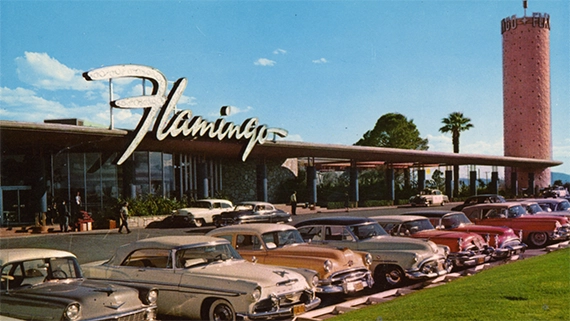
The most transformative project of this era was the Flamingo Hotel, opened by Benjamin “Bugsy” Siegel in 1946. Unlike previous establishments, the Flamingo’s goal was to bring the vibe of Hollywood to Las Vegas with its swanky decor, top-tier entertainment, and opulent accommodations. Siegel’s vision was to create a resort that appealed not only to gamblers but also to the Hollywood elite. The Flamingo’s opening marked the beginning of a new phase for Las Vegas, attracting celebrities and high rollers from across the country.
Key Players in the City’s Development
As we said before, Bugsy Siegel, a notorious mobster, played a major role in shaping the early landscape of Las Vegas. Siegel was sent to Las Vegas by his associates in the National Crime Syndicate to manage their interests and expand their operations. He envisioned the Flamingo as a luxurious resort that would set a new standard for Las Vegas.
Siegel’s dream for the Flamingo was considered over-the-top—he wanted it to be the most extravagant hotel in the world, complete with a golf course, health club, and upscale restaurants. But the project was plagued with budget and cost overruns, and Siegel faced pressure from his mob associates. Despite these growing pains, the Flamingo opened its lavish doors on December 26, 1946. Although Siegel didn’t live to see its success, the Flamingo set the blueprint for future Las Vegas resorts, blending luxury, entertainment, and high-stakes gambling.
Meyer Lansky and the National Crime Syndicate
Meyer Lansky, who was referred to as the “Mob’s Accountant,” was instrumental in financing and managing most of Las Vegas’ early casinos. Lansky was a key figure in the National Crime Syndicate, which invested heavily in Las Vegas during the post-war years. His financial skills and connections allowed for the flow of funds into various projects, guaranteeing the rapid growth of the city’s gambling industry. Lansky’s involvement helped establish Las Vegas as a prime place for gambling and entertainment, with organized crime playing a big but behind-the-scenes role in its development.
Lansky’s approach was more strategic and calculated than Siegel’s—he understood the importance of maintaining a relatively good public image while managing the flow of illegal money into legit businesses. This dual strategy meant Lansky could operate effectively within the shadows while still benefiting from the booming Las Vegas economy. His influence extended way beyond the Flamingo, as he was involved in financing other major casinos on the Strip, helping to solidify the city’s reputation as a gambling haven.
Increased Tourism and Entertainment Options
The post-war boom also saw a dramatic increase in tourism. As travel became more accessible to all, visitors flocked to Las Vegas to experience its mix of entertainment and gaming offerings. The construction of new hotels and casinos provided a lot of options for tourists, and the city quickly gained a reputation as one of the best vacation destinations. The presence of top entertainers, including musicians, comedians, and showgirls, further elevated Las Vegas’ appeal, bringing in even more tourists to the city.
The Rat Pack Era (1950-1960)
The Rat Pack era in Las Vegas is the stuff of legends—it defined an entire decade! The 1950s and 1960s were metamorphic years for Las Vegas, thanks to the magnetic presence of the Rat Pack, who turned the city from more than a gambling spot—it was a place to see fabled performers in action.
Who Are The Rat Pack?
For those of you who don’t know, The Rat Pack was made up of some of the most talented and charismatic entertainers of the time. The core group included Frank Sinatra, Dean Martin, Sammy Davis Jr., Peter Lawford, and Joey Bishop. These performers were more than just entertainers; they were symbols of cool—they had style, sophistication, and a certain rebellious charm that transfixed audiences.
- Frank Sinatra: “Ol’ Blue Eyes” was considered the leader of The Rat Pack; he was also nicknamed “Chairman of the Board.” Sinatra’s velvety-smooth voice and effortless cool made him the center of the group. His influence went beyond music and movies; he played a big part in shaping the social and cultural landscape of Las Vegas.
- Dean Martin: Known for his laid-back demeanor and impeccable comedic timing, Martin brought a different kind of charm to the group. His performances were marked by a combination of singing and humor that audiences adored.
- Sammy Davis Jr.: A multi-talented performer, Davis was a triple threat—a singer, dancer, and actor. His dynamic performances and ability to break racial barriers made him a critical figure in both entertainment and social justice.
- Peter Lawford: An actor and socialite, Lawford brought some of Hollywood to the Rat Pack. He was also the brother-in-law of President John F. Kennedy, which added a political dimension to the group’s influence. Lawford’s suave demeanor and acting chops made him a cherished member of the Rat Pack, contributing to their collective appeal.
- Joey Bishop: Known as the “straight man” of the group, Bishop was a comedian and actor who provided a balance to the antics of his more flamboyant colleagues. His quick wit and sharp humor made him a favorite among audiences and a central part of the Rat Pack’s dynamic.
The Sands Hotel and Casino: The Epicenter of the Rat Pack’s Performances
The Sands Hotel and Casino was the epicenter of the Rat Pack’s performances. The Copa Room at the Sands was their playground, where they delivered performances that were a combo of music, comedy, and their infamous, off-the-cuff interactions. These shows were not just performances; they were events that captured the vibe of Las Vegas. The Sands was where the Rat Pack’s camaraderie and on-stage chemistry were most evident, making it the place to be for anyone who wanted to experience the best and brightest of Las Vegas entertainment.
The Sands wasn’t just a hotel; it was an axis of entertainment and culture.
The Copa Room’s intimate setup meant audiences could experience the Rat Pack’s performances up close and personal, creating a novel and certainly memorable experience. This venue was synonymous with the Rat Pack’s magic, where their banter and magnetic performances brought the house down night after night.
Impact on Las Vegas’ Entertainment Scene
The Rat Pack were the ones who changed Las Vegas’ entertainment scene—their performances were a break from the traditional, scripted shows of the time. Instead, they introduced a format that was casual, humorous, and super engaging. This approach set a new standard for entertainment in Las Vegas, influencing countless performers and the overall vibe of the city’s nightlife. The Rat Pack’s shows at the Sands were absolutely legendary and featured surprise guest appearances and unscripted moments that kept audiences on their toes and guessing.
The group’s influence went beyond their performances—The Rat Pack’s presence in Las Vegas attracted other top entertainers, helping to establish the city as a preeminent spot for world-class entertainment. Their shows were attended by celebrities, political figures, and fans from all over, adding to the allure of Las Vegas as a major hotspot.
Cultural and Social Significance
The cultural and social significance of the Rat Pack’s performances also went well beyond the stages where they played! They broke down some racial barriers in Las Vegas—when Sammy Davis Jr. faced a lot of racial discrimination, he found strong allies in his fellow Rat Pack members. Frank Sinatra was especially vocal in supporting Davis and making sure that he got equal treatment. Their collective stance against segregation led to changes in Las Vegas, including the desegregation of hotels and casinos. This was a monumental shift that not only improved conditions for African-American performers but also set an example for the rest of the country.
In addition to their impact on civil rights, the Rat Pack also played a role in political and social movements. They were friends and supporters of John F. Kennedy, and their influence crept into the political realm, showcasing the intersection of entertainment and politics during this era.
Because of Peter Lawford’s connection to the Kennedy family, it brought a political dimension to the group’s activities. The Rat Pack supported Kennedy’s presidential campaign, and their popularity helped bring a glamorous edge to his political image. This intersection of Hollywood and politics was indeed a unique feature of the Rat Pack era, showing their influence went beyond the bounds of the entertainment industry.
The Rat Pack era was a defining period for Las Vegas, one that left an indelible mark on the city’s identity. Through their performances at the Sands Hotel and Casino, their efforts in breaking down racial barriers, and their cultural influence, Frank Sinatra, Dean Martin, Sammy Davis Jr., Peter Lawford, and Joey Bishop changed Las Vegas into an entertainment powerhouse. Their legacy continues to influence the city, as modern performers and audiences still look back on the Rat Pack years as a golden age of style, music, and unmatched magnetism. The spirit of the Rat Pack lives on, echoing through the stages and streets of Las Vegas, reminding us of a time when entertainment was synonymous with cool.
The Mega-Resorts and the Corporate Era (1960-1970)
The 1960s was another big turning point in the landscape of Las Vegas! It ushered in the era of mega-resorts and corporate dominance, where we witnessed the construction of grand, themed hotels like Caesars Palace, the MGM Grand, and other big establishments like The International, Circus Circus, and The Aladdin. These developments changed the city from a collection of small, family-owned casinos into a playground of opulence and excess, and it was driven by corporate investments.
Transformation of the Las Vegas Landscape
The building of mega-resorts like Caesars Palace and the MGM Grand totally redefined the Las Vegas skyline.
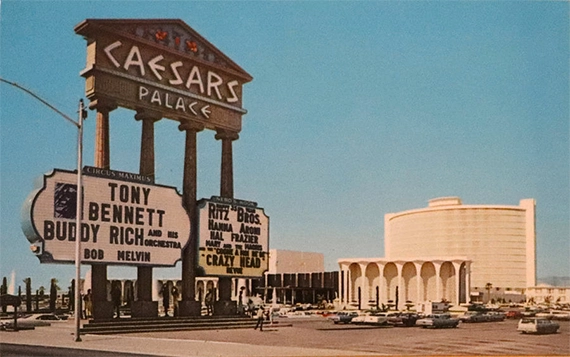
Jay Sarno opened Caesars Palace in 1966, a resort that was designed to emulate the grandeur of ancient Rome. With a $24 million investment, the resort featured 680 rooms, lavish fountains, and statues, creating an immersive experience for its guests. Sarno’s vision was to make every guest feel like a “Caesar,” offering a fantasy world of indulgence. This resort set a new standard for what Las Vegas could offer visitors, fusing gambling with high-end elegance and entertainment.
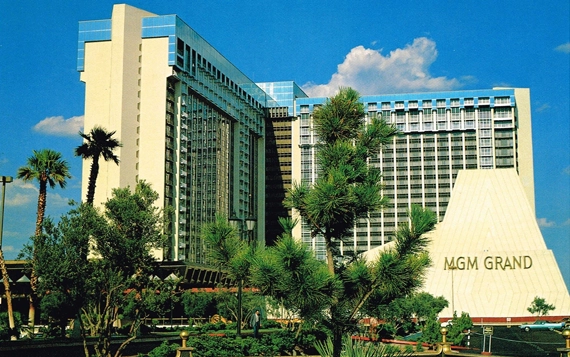
The MGM Grand, opened by Kirk Kerkorian in 1973, aimed to be the world’s largest hotel. With over 2,000 rooms and a massive casino floor, the MGM Grand symbolized the new era of mega-resorts that prioritized size, luxury, and entertainment. These developments marked a recasting from the era of small, family-owned casinos to huge corporate entities. The need for sizable capital investments, which individual owners could no longer afford, brought about this change. Corporate ownership meant that bigger and much more elaborate resorts could be built and introduced to new revenue streams like shopping malls and other entertainment venues.
Increased Focus on Opulence and Excess
The mega-resorts of the 1960s and 1970s emphasized opulence and excess, catering to a clientele that sought an extravagant experience. Resorts like Caesars Palace and the MGM Grand were designed to awe visitors with their grandiose architecture and lavish interiors. Features such as Roman statues, massive fountains, and themed decor created an atmosphere of indulgence. These resorts offered a wide range of high-end amenities, including gourmet restaurants, luxury shopping, and world-class entertainment.
The Rise of Howard Hughes and His Impact on the City
Howard Hughes’ arrival in Las Vegas in 1966 played another big role in this transformation. Hughes bought several major properties, including the Desert Inn, Sands, Frontier, and others. His presence brought a new level of legitimacy to the Las Vegas gaming industry and encouraged other corporations to invest in the city. Hughes’ aggressive acquisitions also led to concerns about monopolistic practices, as he controlled a huge portion of the Las Vegas Strip’s gaming revenue by 1968.
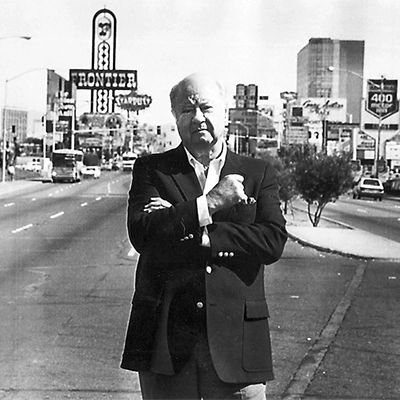
But because Hughes invested so heavily in the city’s resorts, he became the largest employer in Nevada. His investments helped to clean up the city’s image, moving it away from its associations with organized crime and attracting more legit business interests.
Despite the concerns, Hughes’ influence was largely seen as positive, bringing more stability and respectability to the industry.
Pros and Cons of the New Era
The corporate era of mega-resorts brought with it both advantages and disadvantages to Las Vegas, like the following:
Pros
- Economic Growth: The construction of mega-resorts created thousands of jobs and boosted the local economy. The influx of tourists and the development of new attractions contributed to the city’s growth and prosperity.
- Legitimacy: The involvement of reputable businessmen like Howard Hughes helped to legitimize the Las Vegas gaming industry, reducing its association with organized crime and attracting more mainstream investment.
- Innovation: Mega-resorts introduced new forms of entertainment and amenities, making Las Vegas a more attractive destination for a diverse range of visitors.
Cons
- Loss of Small Businesses: The rise of corporate-owned mega-resorts led to the decline of small, family-owned casinos. Many of these smaller establishments could not compete with the resources and attractions offered by the larger resorts.
- Monopolization: The concentration of ownership in the hands of a few large corporations raised concerns about monopolistic practices and the potential for less competition in the market.
- Cultural Shift: The focus on opulence and excess shifted Las Vegas’s cultural landscape, moving it away from its roots as a gambling town and towards a broader entertainment destination. This shift had both positive and negative implications for the city’s identity and appeal.
The Legacy of the Golden Age
The Golden Age of Las Vegas, spanning from the 1940s to the 1960s, left an indelible mark on the city, shaping its identity and legacy that still influences modern-day Las Vegas!
The opulent casinos and glamorous shows of this era established Las Vegas as the go-to place for high-stakes gambling and world-class performances. This legacy has carried forward, with modern Las Vegas building on this foundation to uphold its reputation as a city where anything can happen.
Architecture from the Golden Age, like modern mid-century designs, continues to influence the city’s landscape. Landmarks like the Flamingo and the original Caesars Palace are reminders of the era’s grandeur and style. Modern resorts often pay homage to these early designs, fusing the more nostalgic elements with contemporary luxury to attract all kinds of visitors.
Evolution of Entertainment Options and Mega-Resorts
The evolution of entertainment in Las Vegas has been nothing short of dramatic since the Golden Age. The Rat Pack set the standard for live performances, and their influence is still felt today. The concept of residency shows, which began with stars like Elvis Presley in the 1970s, has evolved into a cornerstone of Las Vegas entertainment.
Artists like Britney Spears, Adele, Celine Dion, and Lady Gaga draw huge crowds, continuing the tradition of legendary performances that make Las Vegas the place to be.
Mega-resorts have become the hallmark of Las Vegas. The transition from smaller, family-owned casinos to large corporate-owned mega-resorts began in the 1960s and has continued to grow. These resorts have more than just gambling; they provide the full vacation experience with extravagant accommodations, gourmet dining, high-end shopping, and a variety of entertainment options. Resorts like the Bellagio, the Venetian, and the Wynn epitomize this evolution, combining luxury with a host of amenities to cater to different audiences.
Continued Reputation as a Nucleus for Excess and Indulgence
Las Vegas has held onto its rep as a city of excess and indulgence because The Golden Age set the standard, and modern Vegas has not only preserved but expanded upon that reputation. Today’s Las Vegas offers even more extravagant experiences, from lavish suites and high-roller gaming rooms to exclusive nightclubs and Michelin-starred restaurants. The city thrives on providing visitors with unparalleled experiences, reinforcing its image as a playground for adults.
Ongoing Influence of the Rat Pack and Other Iconic Performers
The influence of the Rat Pack—Frank Sinatra, Dean Martin, Sammy Davis Jr., Peter Lawford, and Joey Bishop—remains strong in Las Vegas. Their legacy is seen in the ongoing popularity of residency shows, where contemporary artists perform extended engagements, bringing fans from around the world to the city. This model, pioneered by the Rat Pack, continues to be a major draw for Las Vegas, merging nostalgia with modern entertainment.
Residencies by artists like Britney Spears, Celine Dion, and, more recently, Adele and Lady Gaga have become major attractions, proving that the appeal of seeing top-tier performers in an intimate, recurring setting remains as strong as ever. These shows not only honor the tradition started by the Rat Pack but also push the boundaries of live entertainment with elaborate productions and state-of-the-art technology.
Early Years’ Influence on Modern Identity and Appeal
The early years of Las Vegas, characterized by the construction of iconic casinos and the rise of legendary performers, continue to shape the city’s identity and appeal. The spirit of innovation and risk-taking from this era is evident in the city’s constant reinvention and adaptation to new trends. Whether through the development of new mega-resorts, the introduction of cutting-edge entertainment technologies, or the continuous influx of top-tier talent, Las Vegas stays true to its roots while constantly adapting to meet the wants and needs of new generations of visitors.
The cultural and social fabric of Las Vegas, woven during the Golden Age, persists in the city’s commitment to offering novel and memorable experiences. This enduring legacy makes sure that Las Vegas stays a symbol of fun, luxury, and endless possibilities.
By reflecting on its past while continually pushing forward, Las Vegas honors the legacy of its Golden Age and remains one of the most dynamic and compelling destinations in the world. The city’s ability to mix its storied history with modern innovations keeps it at the forefront of global entertainment, solidifying its place as a must-visit spot—and that won’t change anytime soon!
Legacy: The Golden Age of Las Vegas Lives On
The Golden Age of Las Vegas was a gilded time that gleamed with promise not only for visitors who came with hopes and dreams of winning it big but for residents who benefited from the influx of money they poured into the Nevada economy because of the casinos. And if you were lucky enough to see The Rat Pack do their thing in person, you are a part of the storied legacy.
The Golden Age of Las Vegas was truly a transformative time that cemented the city’s foundation as an entertainment powerhouse. From the rise of legendary casinos and the influence of the mob to the era-defining performances of the Rat Pack, these years made Las Vegas’ identity what it is. The legacy of this period keeps influencing modern Las Vegas, where visitors can enjoy the opulence and excitement that Vegas is known for.
Las Vegas is a wonderful mix of its golden past and modern luxury. When you visit, whether it’s your first trip or seventh, you can marvel at the extravagant mega-resorts and also explore and appreciate the fascinating history that made this city what it is. Take a stroll down the Strip, stand under the glow of the neon lights, catch a show of two, and savor the flavors of world-class restaurants. The soul of the Golden Age is alive and well, blending a nostalgic charm with modern-day attractions. It doesn’t matter if you’re drawn by the retro allure or the cutting-edge excitement; Las Vegas is always an experience you won’t forget.

Alyssa contributes sportsbook/online casino reviews, but she also stays on top of any industry news, precisely that of the sports betting market. She’s been an avid sports bettor for many years and has experienced success in growing her bankroll by striking when the iron was hot. In particular, she loves betting on football and basketball at the professional and college levels.








